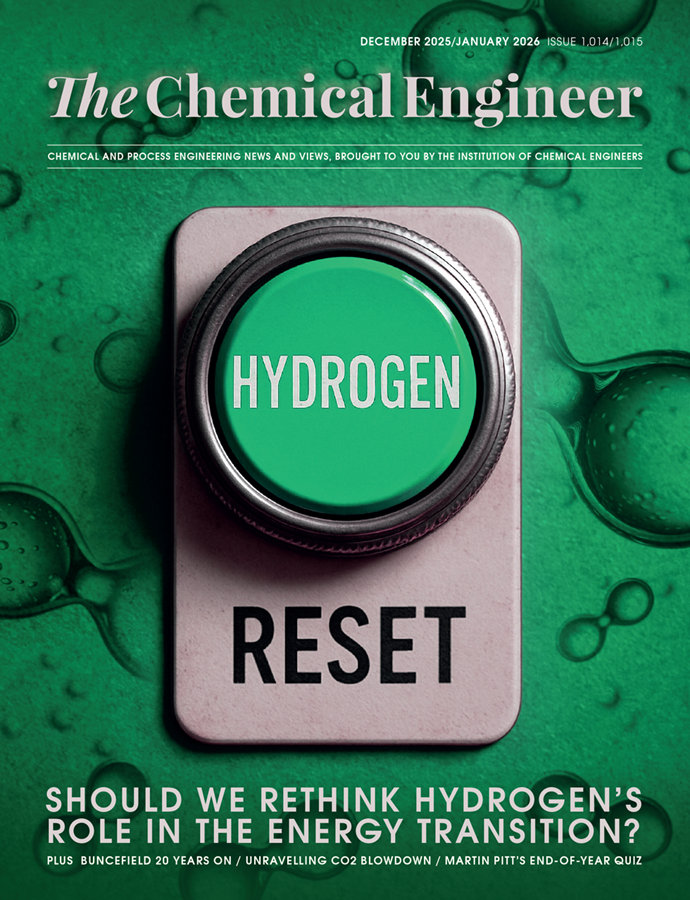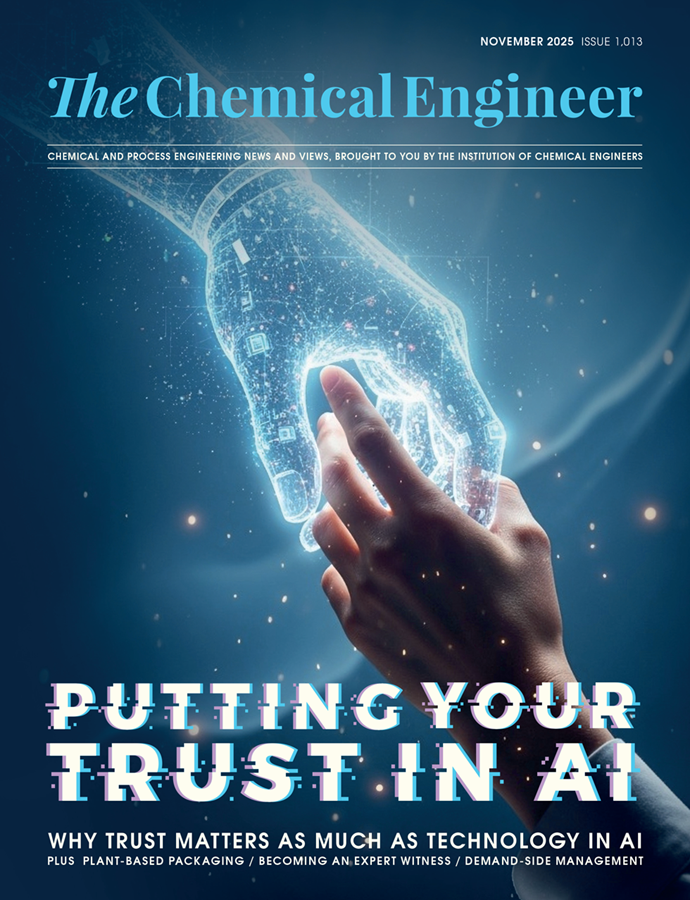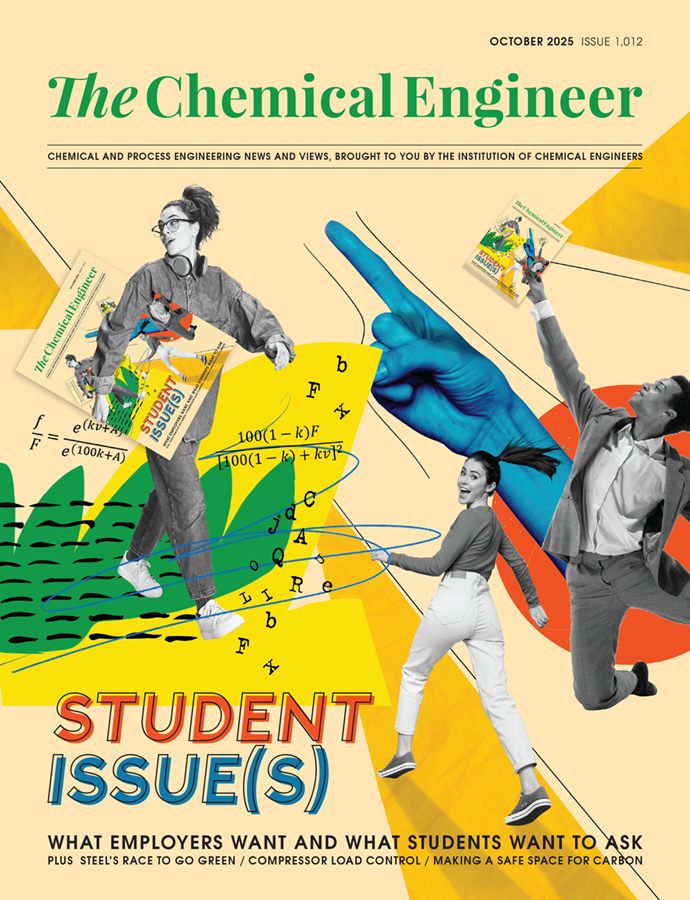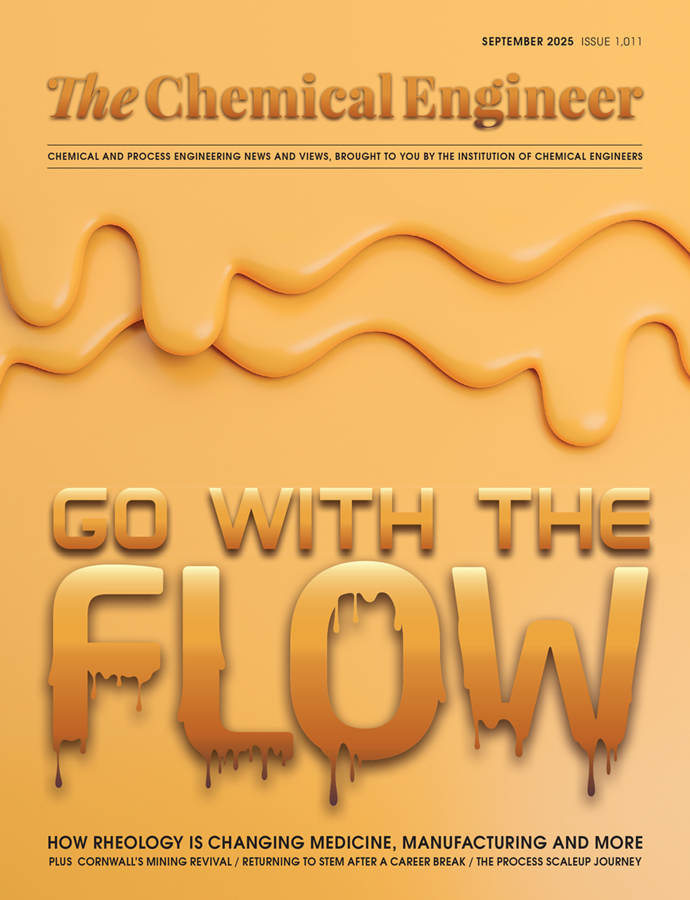Carry on Teaching: Higher Education During a Pandemic
Amanda Jasi surveys students and teachers to understand how Covid-19 has impacted university life and how successful the forced changes have been
AS it has for many aspects of society, the Covid-19 pandemic has served a blow to the education system. Universities have been forced to change how they operate to enable students to continue learning in the face of imposed restrictions and safety measures.
How have teaching methods changed? And how well have they been received? To get a better understanding of this, in early 2021, The Chemical Engineer surveyed educators and students of biochemical, bioprocess, chemical, and process engineering courses.
We received a healthy level of participation, with responses from 55 educators (from 27 universities in seven countries), and 349 students (from 18 universities in eight countries). A small number of respondents were also invited to provide additional comment post-survey.
Here’s what we learned.
Educational transition
As the pandemic emerged, it required a rapid shift in response to the regulations and restrictions brought in to prevent its spread. Primarily, this shift involved adopting remote working practices.
According to our students, remote learning now accounts for the vast majority of how they are educated, with hybrid models (combining remote learning and on-campus activity) presenting a significant portion also.
An insignificant portion of students told us that they had been educated through on-campus activity. All were MEng students based at three separate universities located in China, Spain, and Trinidad and Tobago. These universities were represented more significantly in the “remote learning” and “hybrid education” categories by students completing Bachelor’s and Master’s (or equivalent) degrees.
Of the very small group of students that responded “other”, all described the use of remote learning and hybrid models at different times, some specifying that the difference was dependent on lockdown or restriction level at the time.

It is evident that universities have made good use of remote learning and hybrid models since the pandemic began.
University education has typically relied upon on-campus delivery, including through lectures, seminars, and practical activities. As such, the switch to primarily remote and hybrid has required a significant change in course structures and materials.
Educators highlighted the initial challenges which they faced in this regard.
Many said it was difficult switching to online teaching. Educators had to learn to use new software and had little time to do so. They had to change their teaching style and create new teaching materials.
Jeremy Double, a lecturer at the University of Huddersfield, UK, said that “revising and recording lectures in ‘chunks’ for asynchronous delivery was time consuming”.
A senior lecturer at another UK university said that additional workload hours were not made available to academics to convert their teaching materials for online delivery.
Some educators were able to take advantage of existing systems for online teaching. Ashleigh Fletcher, a professor at the University of Strathclyde, said: “We have a successful online programme so had a lot of materials for the immediate impact on S2. Also, the timing affected only a few of the final weeks of delivery. The online materials for our programme by distance learning also give us some resilience for this year, in tandem with development of the degree apprenticeship scheme, where we have been working on enhancing the learner journey.”
Educators said a key issue has been keeping students engaged. Zachary Aman, a professor at the University of Western Australia, said: “[The challenge] appeared to essentially be a function of how best to spark and maintain intellectual curiosity when students were limited to the physical confines of their home environment”.
“To address this, I introduced an informal ‘thermodynamics in cooking’ segment at the beginning of each virtual lecture, emphasising the observational nature of simple, thermodynamic principles: for example, salting pasta water as an explanation of colligative properties.”
He also tried to draw on thermodynamic thought experiments “as a vehicle to inspire continued thought and curiosity throughout the remainder of the day”.
Another challenge which educators faced was a lack of off-campus access to required software.
Peter Weston, a lecturer at the UK’s Sheffield Hallam University explained a method used to tackle this. “We moved labs online with varying success and computer-based teaching … was heavily disrupted as remote access was not possible at that time. This meant some assessment tasks had to be modified to reflect that students were unable to access software and undertake labs.”
Education under the pandemic has not only involved changes in class-based aspects of education, but also hands-on elements such as laboratory sessions.
Weston added: “We worked with student representatives to resolve these issues, including by supplying laptops, enhanced hardship funding, making reasonable adjustments to assessment packages, and ensuring off-campus access to all course-level software for the 2020/21 academic year.”

Staff also had to adapt to an uncertain and ever-changing situation.
Matthew Lennox, a lecturer at the University of Bath said: “After the initial all hands-on deck stage of Spring 2020, the biggest challenges have been time constraints, and constant uncertainty around regulations and Government advice.”
Lennox added: “Government guidance was frequently announced last minute and could change at a few days’ notice – this lack of certainty and clarity meant that we had to produce robust plans for a range of possible outcomes, knowing that we may not have much notice about which of these plans would be implemented. This is where the time constraint comes in – there are only finite hours in the week and additional time spent on contingency planning reduces available time for other aspects of our lives.”
When asked whether the situation has since improved, Lennox said: “Yes and no. Government guidance is still prone to change at short notice, and still lacks clarity in some areas.”
“Whatever happens, we have to be able to provide excellent teaching and support to students. We are therefore still planning for multiple outcomes, with an associated increase in workload. The key difference now is that we have more tested contingency plans in place and have had time to evaluate the effectiveness of, for example, teaching methods, technology, student support networks, campus health and safety… The time constraint is still a big issue, however, and teaching-related workloads are still above ‘normal’.”
Despite the challenges faced, the majority (51) of educators believe they have been able to deliver full online learning experiences to students over this period, at least “most of the time”.
Handling “hands-on” in the pandemic
The majority of educators told us they found practical work (primarily laboratory-based) the most difficult to deliver.
Typically requiring access to on-campus facilities, and involving many students in a single room, some laboratory sessions were not possible during the pandemic, although 11% of educators said that they had been able to allow students to take part in all scheduled laboratory sessions.
Asked how this was made possible, Chris Dodds, department head at University of Nottingham, UK and also current Chair of Heads of Chemical Engineering UK said: “In terms of running all 1st semester labs, we spread the labs from more focussed sessions to run essentially all day Monday-Friday in a socially-distanced way.”
Our students said they had been able to participate in on-campus lab sessions through use of social distancing and limited group sizes; well-ventilated rooms; masks; use of hand sanitiser; temperature measurement; and according to one student in China, nucleic acid testing.
Dodds added: “During the recent lockdown, we obviously have not been allowed students on campus but we delivered a lot of labs in the first semester, and for years 2 and 3, for example, the second semester is design focussed so [there was] no impact there. “For Year 1 we have developed two systems.”
One involved a stirred tank reactor that would usually be operated locally by students. This has been adapted with cameras and remote control so they can operate them remotely. The other system is a virtual refrigeration rig available through a TSC simulation package that students have been running remotely in groups.
Dodds said that: “now they’re allowed to return they will be running all labs and their practical assessment week again after Easter.”
Similarly, other staff that were only able to deliver some laboratories (or none at all) have adopted alternative methods for providing practical experience. 30 out of 54 educators revealed that “some” planned lab sessions had taken place while 11 said that none had taken place.

Alternatives included “virtual” laboratories of some sort.
Some experiments were demonstrated live, or uploaded online for students to view, while being given data to analyse. Laboratory simulation applications also featured.
Tom Rufford, an associate professor at the University of Queensland, Australia, explained the use of home-based practicals for the School of Chemical Engineering.
He said: “We wanted this to also be a fun way for students to engage in the course and in virtual teamwork. The context of the assignment was that students needed to design an activity that demonstrates a mass transfer concept for a group of highschool students.”
The assignment had to be completed without the need for specialised personal protective equipment, and any materials had to be available at home or from a grocery store or pharmacy.
Students’ video submissions included dye diffusions, creating a candy rainbow (per an example from the magazine Scientific American), and egg-colouring experiments. Rufford said there were “many great videos, including students involving their housemates, younger siblings, and parents in the demonstrations”. However, he acknowledged some issues with the format, including with uploading video files, acknowledging sources that aren’t standard academic sources, and time-consuming grading as there were so many different topics.
To help students adapt to using alternative labs, educators gave lab briefings, group discussions, and Q&A sessions.
However, alternatives were not always possible.
Lennox said: “Some laboratory experiments could not be effectively translated online in the time available – that is, we did not feel the students would gain from watching videos of these – and we will include those missed sessions in planning for the subsequent year of study for those students.”
Asked directly whether these would be on-campus or online he said: “Currently we are planning for both eventualities (on-campus and online) and will make a decision on which to go with closer to the start of the 2021–22 academic year.”
Students’ opinions were split on the effectiveness of alternative methods to deliver practical aspects of their courses.
Of the 110 that answered the question 9% strongly agreed, and 28% agreed. Those that responded negatively accounted for 22% (disagree) and 12% (strongly disagree).
For those students who had concerns, some said that they felt that virtual sessions were inadequate compared to in-person labs, during which they could interact with equipment and easily ask staff for support. Specific flaws included poor quality of recorded alternatives, a lack of understanding of the material, and receipt of insufficient support to aid understanding under the new circumstances.
On the plus side, educators told us that plans are underway to improve this, including new remote systems, pre-prepared videos to support understanding of laboratory equipment, and live lab sessions allowing for in-session input.
Other educators said they would either continue with alternatives as they are, await the ability to host in-person labs, or that other plans were under development.

Altered assessment
Another aspect that has been forced to change is how students are assessed.
Educators were asked whether they had adopted any new methods of assessment, and of the 53 that answered, 92% said they had.
Examinations – universities’ key assessment method – are usually conducted in person with students watched over by invigilators to ensure integrity. Much like the delivery of teaching, the pandemic saw this form of assessment adapted, with students being able to sit them remotely.
One programme director based in the UK, told us how “open-book online submissions” work.
They said: “Existing examination papers were either replaced or significantly modified to remove dependence on factual recall, and instead emphasised the effective use of information, allowing questions that required the student to analyse, evaluate, or synthesise knowledge.”
Students were allowed up to 48 hours from paper download to upload their answers. This addressed concerns around reliable access to online resources and assessments, as well as quiet areas to prepare for and sit exams.
Other new forms of assessment have included periodic online multiple-choice questionnaires and quizzes, virtual presentations (in place of live ones), extended projects, and group reports.
Aman said that greater emphasis has been placed on routine periodic assessments rather than large, one-off assessments, “to balance against the uncertainty felt amongst the student cohort,” adding that “calculated formula” questions “were repeated throughout the semester’s periodic assessments to ensure students understood core content.”
Asked whether the alternative assessment methods were well handled and fair, most students said they were. Of 250 respondents, 137 said “yes” and 80 “no”.
The “nos” primarily cited online examinations, taking issue with the level of difficulty of the remote examinations, which they believed was intended to counter the open-book nature of the exams as well as potential for cheating. As a result of these harder exams, students reported taking extensive amounts of time to complete their papers, one stating it took them 11 hours!
For some, timing restrictions were stricter. One student, who chose to remain anonymous, said that their exam time was doubled and they were allowed 4 hours to submit the papers. However, the papers were longer than pre-pandemic counterparts. The uploading process for completed papers was described as “time-consuming”.
“I had managed to submit just in time, but I know of others who didn’t manage to,” they said.
Students felt ill prepared for remote exams, as they were very different compared to traditional exams, making practice difficult. Some students said they were displeased by the fact that exams did not take into account their working calculations and only the final answer was marked, meaning the loss of potential marks which would typically be available.

Students also questioned the integrity of the exams, even with use of online invigilators. A few even reported cases of cheating, justifying the concerns that educators have had about the opportunity for cheating and collusion.
They also felt that they had not received sufficient support to understand the material and prepare for their exams. They said that they didn’t believe the remote exams took into account the impact of changes in teaching, their understanding and knowledge, or the impacts of the pandemic on mental health, and subsequently on performance.
However, despite student concerns, when asked whether they believed novel assessments were robust and maintained integrity, most educators (of a total of 47 respondents) said they did.
They said plans to improve remote online exams are underway, but acknowledged that preventing cheating and collusion would be difficult.
Anuska Mosquera Corral, an associate professor at the Universidade de Santiago de Compostela, Spain, said that exams there are generally being carried out face-to-face. However, if the situation changes, the plan is to improve online testing by adding conditions such as preventing students from returning to questions, and preparing personalised exercises to avoid collusion.
While educators also talked about a need for improving questions, designing better online assessments, using virtual invigilation, and limiting exam times, they do anticipate a return to using traditional exams.
Missed opportunities
In addition to changes in their education and teaching, some students have faced the disappointment of missing out on industrial placements or international student programmes.
Programmes have been shortened, postponed and cancelled, and several students reported that they would no longer be able to participate in international opportunities, even if they were in their “home country”.
Where students were able to attend their placements, they noted reduced on-site hours and the use of Covid safety measures at work.
While some students were able to participate remotely, they reported limitations similar to those of remote study, including lack of hands-on experience, an inability to properly collaborate and interact with other workers, and isolation because of difficulty communicating with peers and teaching staff.
Students unable to find a placement reported ways in which universities compensated, including offering additional modules or research projects – although these were applicable only for students set to undertake their placements in the 2019/2020 and 2020/2021 academic years. For those due placements after that, the impacts on their participation mostly remain unclear.
Student concerns

In light of the many changes to education seen under the pandemic, students have become concerned about the adequacy of their education and their subsequent preparedness for the future.
The majority of student respondents believe that their education will be less adequate than those who studied prior to the pandemic, with 20% (49 of 246) and 34%, respectively, saying they “strongly agree” or “agree”.

The majority also believed that studying under the pandemic will negatively impact how their qualification is viewed by employers, with 23% and 30% saying they “strongly agree” and “agree” respectively.
Abdalaziz Challab, a Master’s student at Aston University, UK, commented: “Employers might simply decide that the cohorts graduating under ‘pandemic mode’ will be less valuable than those who didn’t. It’ll already be hard enough to get a job amidst this terrible, terrible economic recession … it’s not my fault that the pandemic happened! Give us some leniency.”
Eduardo Marques Prado, a student at the University of Edinburgh, UK, said he “wouldn’t understand an employer that under-evaluates my application once I graduate, just based on the current situation”. But he added that as costs and fees for students under the pandemic remain the same as before, universities should work to amend the possible employment issue. Universities could, he said, work with “main employers” and discuss minimum requirements for prospective engineers, allowing students additional time to achieve that standard.
Similar trends of concern are observed in students that began their studies in 2020/2021 (accounting for 72 of total respondents). But, despite this, the majority of first-year students responding (67 respondents) said they did not regret starting their education this year.
Reasons for this included the desire to advance in their education rather than doing “nothing”, not wanting to delay given the uncertain future circumstances, and that they did not feel particularly hindered by the current circumstances.
There was also positivity amongst students, some seeing studying under the pandemic as an opportunity.
A Greece-based student said that despite the negative impacts on the academic efficiency of their university, remote learning offers a whole new set of challenges and opportunities for unique skill development.

Benefits of e-learning and the future of education
Despite the disruption the pandemic had caused, most educators acknowledged that there had been some benefits resulting from adopting remote working technology during the Covid-19 pandemic. When asked about this, 35 of 50 respondents thought that education had benefited in this regard. Only three disagreed, while the remainder said they were “not sure”.
Most educators highlighted the advances in e-learning. They commented on matters such as the ability of staff and students to more adeptly use online learning tools, in addition to other benefits such as distance learning allowing students to take ownership of their education and better use of face-to-face time.
Double said: “Remote collaboration between design project group members somewhat mimics the requirement to work with colleagues at different sites, so students are getting some valuable experience here. But there are downsides as well.”
Kenneth Moffat, a distance-learning course director at the University of Strathclyde also commented on collaboration, saying that there are aspects of education adopted during the pandemic that his university might continue to use in future.
He said: “I expect that the expanded use of online learning tools will remain for the future. Students and staff are now used to working with online tools and webinar software. This opens up possibilities for full-time and distance-learning students, perhaps for collaboration on projects between full-time and work-based distance learning students.”
New teacher Antonio Jose Exposito, a lecturer at the University of Bath, UK said: “I think these challenging times have forced us to find new methods of teaching. Alone they are probably not better than traditional methods but can complement traditional methods in future.”
Indeed, novel methods could become part of the norm in education. However, the Covid-19 pandemic is still with us, and exactly how this period will affect education in the long-term, as well as other aspects of life and work, remains to be seen.
Recent Editions
Catch up on the latest news, views and jobs from The Chemical Engineer. Below are the four latest issues. View a wider selection of the archive from within the Magazine section of this site.




